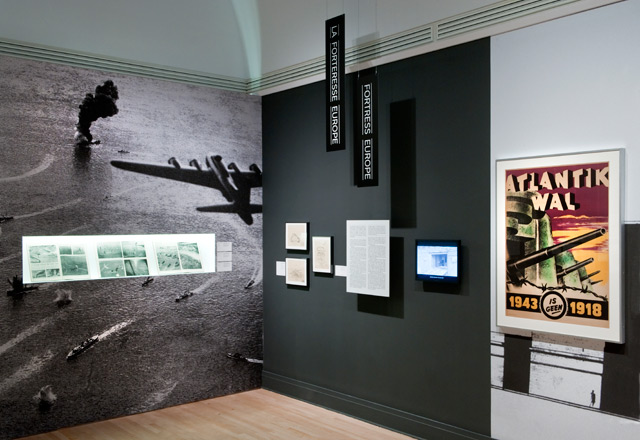
Architecture in Uniform: Designing and Building for the Second World War, installation view at the CCA. Canadian Centre for Architecture, Montreal.
We were on our way to home from work with my wife, when we got caught in that blessing of peace and prosperity, called traffic jam. On the radio they were talking about the exhibition Architecture in Uniform: Designing and Building for the Second World War, organized at the Canadian Centre for Architecture (CCA) and a conference that was about to start, given by the curator of the exhibition, the professor of history of architecture Jean-Luis Cohen.
What an interesting and unexpected subject to research, because war I see as a period of extreme violence, a time when civilization stops from evolving to plunge into a self-destructing chaos, but Jean-Luis Cohen looked beyond the surface to uncover the fascinating world of civil engineering and architecture during WWII, an uncovered period in the history of Architecture.
The decision was taken on the spot; we took the first exit and headed to the CCA building. The exhibition was not yet open to the public, so we could not go trough it beforehand, this made us even more curios to learn about this topic.
When the lights went off, there we had Jean-Luis Cohen on the stage of Paul Desmarais Theatre, talking about war, architecture, architects, propaganda and politics. I don’t recall any conference that would equal this presentation, the slides were archive images without any text whatsoever (PowerPoint presentations are for images not for texts) and Mr. Cohen was talking freely with such eloquence that I felt humbled by the knowledge he was emanating.
The presentation was not structured chronologically, but rather on different topics, a structure that later when I returned to see the exhibition I recognized in the way the way the exhibits are organized in seven galleries.
This approach offers a bird eye view of different problems architects and engineers were faced during this period, such as the resistance of civilian buildings against bombs, the importance of bunkers, camouflage of cities and the way architects would come up with solutions in the different parts of the World, from France to Russia, from England to Germany.
At the time when there were no GPS guided bombs delivered by drones, or night vision, pilots were guided by the light of cities and the shape of rivers and mountains. Every nation had its own approach to concealing strategically important buildings and neighbourhoods. To mislead the enemy, some went as far as recreating Paris, the City of Lights, by using a network of light bulbs outside the city, others, the Russians for example created a fake Kremlin while hiding the real one. The Americans used Hollywood set designers to cover strategic factories with fake gardens and parks.
The exhibition is also presenting those architects that were putting their knowledge to the service of destruction, such as the ones that laid down the plan of Auschwitz, were killing people was part of the design, or the architects in the service of the US Army that helped in the research and development of bombs, to maximize their effect on the German civilian buildings.
The exhibition is beautifully designed and it doesn’t matter if you are interested in history or in architecture, in design or in propaganda, you will find plenty of things to learn and discover. It is open until the 18th of September and I find it to be one of the most interesting exhibitions in town at this time.


